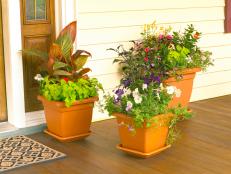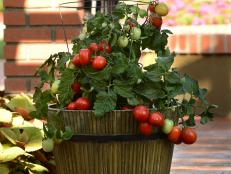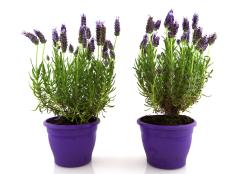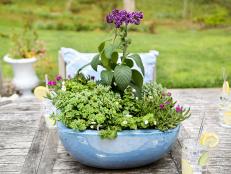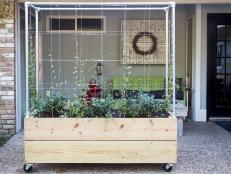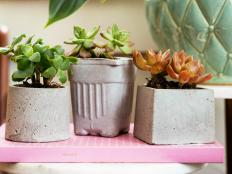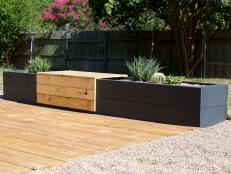Multiple Planted Pots
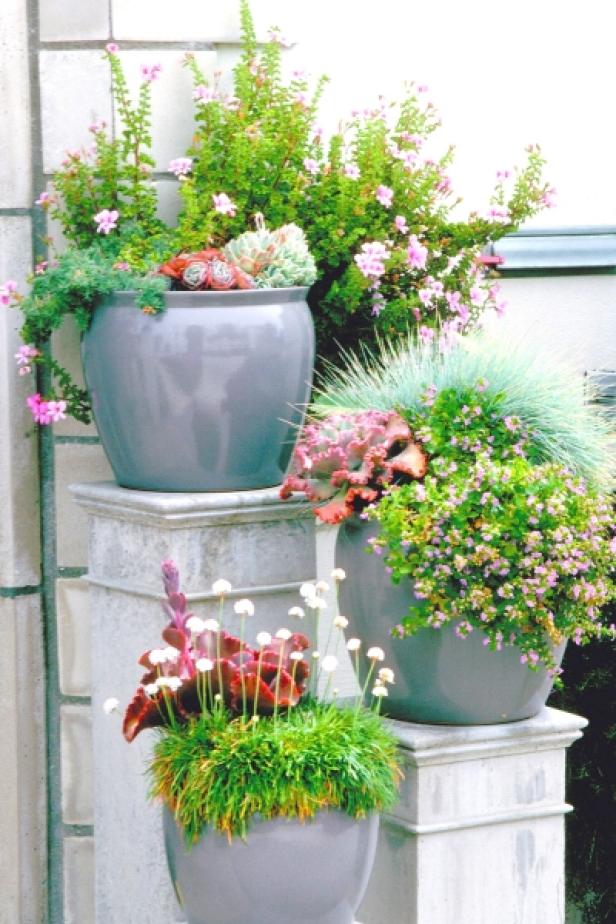

One beautifully planted pot is the loneliest number. But create two, three or four identical pots, and the whole is greater than the sum of its parts. Call this repeated effect "multiplicity."
Multiplicity is not merely a composition of pots, it's a composition of identical pots. It rests on the idea that we may visually overlook one or two elements, but if we create a series of them, all identical, we just can't overlook them.

The use of repetition for dramatic impact can be easily seen in Bernini's travertine colonnades that flank Vatican Square in Rome. The repetition of those simple tubular elements creates something truly monumental. And scale doesn't really matter. Visibility and impact are increased just as effectively through multiplicity of African violets in porcelain pots as it is through a number of matched boxed ficus trees.
This idea is one of the best ways to cope with long walls with no adjacent planting area. Containers are your only means of getting plants there to soften the unrelieved hard surfaces.
It's best to consider three pots the bare minimum for multiplicity, while five is optimal. The effect becomes a combination of pot and plant together, as a half-inanimate and half-living sculpture. Together the composition contributes strong stylized direction to spatial design.
To really make these pots work for you architecturally, it's a good idea to explore plants that share a uniformity of growth. This means that they develop a specific form and that all plants of identical age will grow at the same rate to the same size and shape. Palms are a good example of this. Italian cypress is another. In Spanish gardens the most common repeated elements are identical mother-in-law's tongues in matched terra-cotta pots. Romantic ornamental grasses can be just as uniform as are reed-like horsetails for spare modern style.

One unique plant form well suited to multiplicity is the patio tree. These are shrubs trained by growers into a lollypop shape. They grow with a single straight trunk and a rounded foliage head on top. Often these forms are created with specialty grafting, to control where they branch. They are technically topiary, but because most flower, they aren't sheared as rigorously as all-green foliage plants.
Patio trees allow you to bring an otherwise too-large shrub into smaller gardens. For example, bougainvillea is a monstrous vine. But when grafted onto a straight pole-like trunk, it becomes a beautiful little patio tree perfectly sized for pots. Many azaleas have been used for patio trees to create a most elegant appearance in formalized gardens. You can also get butterfly bush, camellias, gardenias, tropical hibiscus, hydrangea, lantana, rose and lilac patio trees. They are just as successful in pots as they are in ground.
Patio trees are produced in five-gallon nursery containers. Be sure you choose pots that are large enough for a five-gallon root ball. You'll need a few inches of additional freeboard on top to allow for watering. Plan at least a few inches of gap on all sides of the root ball for potting soil. It helps when you go pot shopping to bring along an empty five-gallon nursery pot so you can drop it into prospective containers to ensure the size is adequate. But beware of pots with fluted edges—they may be too narrow at the base to accommodate a root ball.
Multiplicity is a valuable tool for spicing up an urban garden or courtyard. Placing identical pots on the treads of outdoor stairs increases your opportunity to inject plants and color into living spaces. Pots lined up along the top of a wall can increase visual height and add interest. You can even use this technique to enhance a flat rooftop by adding repeating pots and plants. This is one case where the old saying rings true: if a little is good; a lot is better.
(Maureen Gilmer is a horticulturist and host of Weekend Gardening on DIY-Do It Yourself Network. E-mail her at mo@moplants.com. For more information, visit: www.moplants.com. Distributed by Scripps Howard News Service.)






